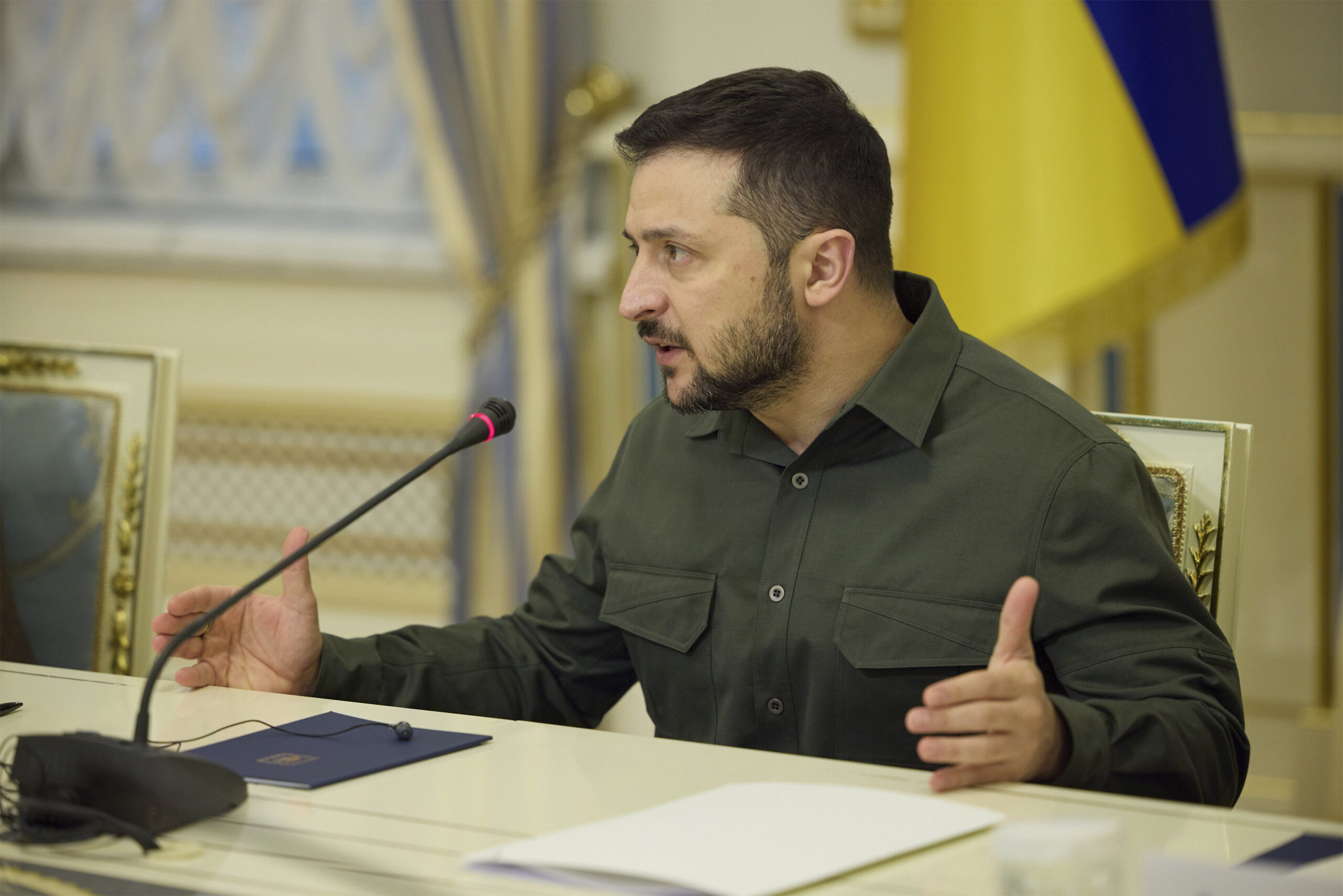
As geopolitical tensions escalate, Ukrainian authorities and their European partners are intensifying their advocacy efforts in the U.S. for additional military aid and training. This comes at a time when Washington’s commitment to the conflict seems to be wavering due to changes in the House leadership and a crisis unfolding in the Middle East.
Recently, a Ukrainian delegation consisting of officials, military personnel, and advisors made a trip to the U.S. capital. Their objective was to present an updated list of requirements: training from the U.S. Marine Corps on executing ship-to-shore operations, new air defenses to counter Russian glide bombs that have been wreaking havoc on Ukrainian forces, and the long-range, single-warhead variant of the Army Tactical Missile System that was covertly sent to Ukraine by the Biden administration last month.
The delegates were cognizant of the need to adapt their appeal to the current geopolitical climate. Roman Tychkivskyy, a former Ukrainian marine now serving in Ukraine’s defense ministry, drew parallels between Russians and Hamas, the terrorist organization responsible for a surprise attack on Oct. 7 that claimed 1,400 Israeli lives. He emphasized that the implications of this conflict extend beyond Kyiv; a successful Russian advance through Ukraine could pose a significant threat to Europe.
“It’s not just war, it’s genocide,” said Tychkivskyy, calling the cooperation between Russia, North Korea and Iran, which supports Hamas with funding and weapons, a new “axis of evil.”
“We definitely know Russia will not stop on Ukraine. If it will be the case for Ukraine to fall, they will continue,” he said.
The visit forms part of a broader effort by Ukraine and its allies to garner more aid amidst wavering international support. Ukraine’s much-awaited spring counteroffensive has been delayed, allowing Russian forces to fortify their positions, and has only achieved limited success. Senior U.S. military officials predict that Kyiv only has a few weeks left before winter weather impedes combat operations.
Meanwhile, the Israel-Hamas conflict has shifted focus away from Ukraine’s predicament. Sunday was a further blow for Ukraine when the new House Speaker, Mike Johnson, indicated his intention to prioritize a standalone aid bill for Israel this week, thereby pushing assistance for Kyiv to the sidelines.
On Tuesday, the Pentagon announced that it has just over $5.4 billion left in presidential drawdown authority for military aid to Ukraine. President Joe Biden has requested an additional $60 billion for Kyiv from Congress as part of a comprehensive emergency funding request that also includes aid for Israel.
Ukrainian President Volodymyr Zelenskyy has been increasingly vocal in his appeals for assistance, meeting with several lawmakers on Monday as Congress deliberates on further aid. In a social media post, he reiterated the argument that Russia poses a threat not just to Ukraine but to all of Europe.
European politicians are also stepping up their efforts to bolster support for Ukraine. One group plans to tour the U.S., arguing that providing military aid to Kyiv will stimulate job creation in America.
This aid is crucial for Ukraine to continue resisting Russian invaders, according to the Ukrainian delegation. A key item on Kyiv’s updated wish list is new air-to-air capability to counter an influx of GPS-guided Russian glide bombs, which can be launched from aircraft far from the battlefield. This new capability has inflicted heavy losses on Ukrainian forces in recent weeks.
“You have to take down the bomber,” said Tychkivskyy. “You need fighter jets, you need air-to-air missiles.”
Andriana Susak-Arekhta, a weapons sergeant in the Ukrainian special forces who was injured by an anti-tank mine near Kherson last December, has called for the U.S. to expedite its training of F-16 pilots. Although Ukrainian pilots have begun training this month, they are not expected to be combat-ready until next year. A Pentagon spokesperson stated on Tuesday that the training would take between five to nine months.
Susak-Arekhta, who was initially told she would not survive her injuries, is now preparing to return to the front lines after nine months of grueling rehabilitation. She has undergone over ten surgeries and now has eight titanium plates in her spine. “My hand is metal, my spine is metal, my jaw is metal,” she said. “I’m the iron lady.”
In addition to air defenses, Ukraine also requires the long-range, single-warhead version of the ATACMS, according to the delegation. Ukraine has already effectively used the medium-range variant equipped with cluster bombs to target dispersed and vulnerable targets, including 18 Russian helicopters at two separate airfields this month.
However, Ukraine’s supply of these weapons is limited. The long-range, single-warhead ATACMS would enable Kyiv’s forces to target better-protected assets — such as aircraft or helicopters in hardened shelters — located deeper within Russian-controlled territory, explained Ihor Semak, a junior sergeant commanding the second division of a grenade launcher platoon.
The Pentagon has been hesitant to send the long-range version, which can target up to approximately 200 miles away, in order to preserve its own munitions stockpile. The Defense Department no longer uses the variant sent to Ukraine, known as the Anti-Personnel/Anti-Materiel variant, in its war plans.
Furthermore, Kyiv is seeking training from the U.S. Marine Corps on amphibious operations to help their forces cross the Dnipro River and exploit Russia’s weak defenses on the eastern side, stated Tychkivskyy. The UK’s Royal Marines are already training hundreds of Ukrainian marines for the complex operations required to cross southeastern Ukraine’s rivers. Tychkivskyy suggested that the U.S. Marines should join this effort.
The delegation emphasized that retaking territory across the Dnipro is crucial for putting pressure on Russian forces on southeastern Ukraine’s coast. The ultimate goal is to reach the Sea of Azov and sever Russia’s land bridge.
“Once we are able to cross the river successfully and move the troops to the other side, there’s not many obstacles for us to move fast, closer to Crimea,” said Tychkivskyy.





